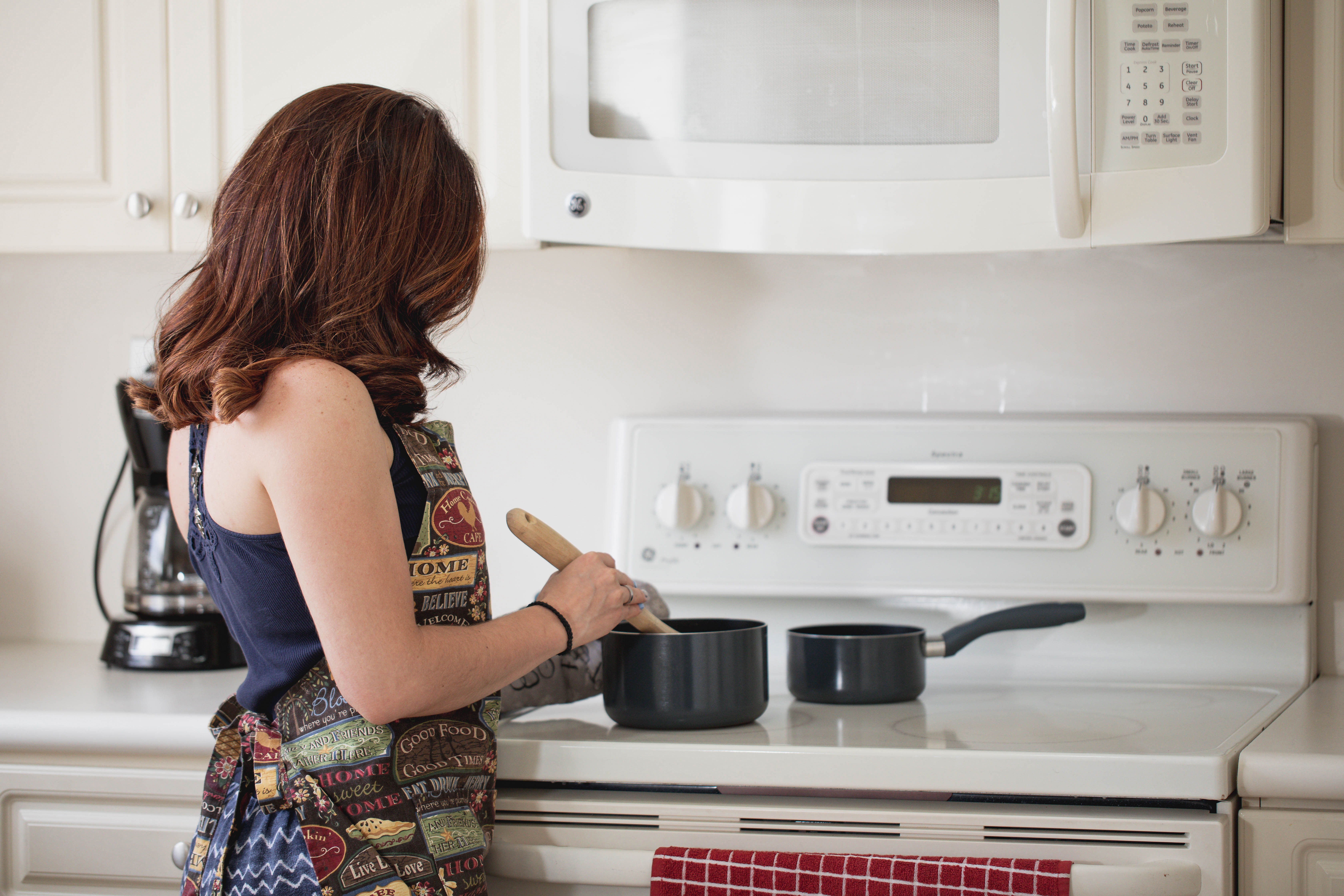
The old debate was always between gas and electric cooktops. But a new player has entered the game: induction. Induction stoves are fairly new in the appliance world. They cook food using a completely new strategy. Keep reading to see which one is right for you!
Induction
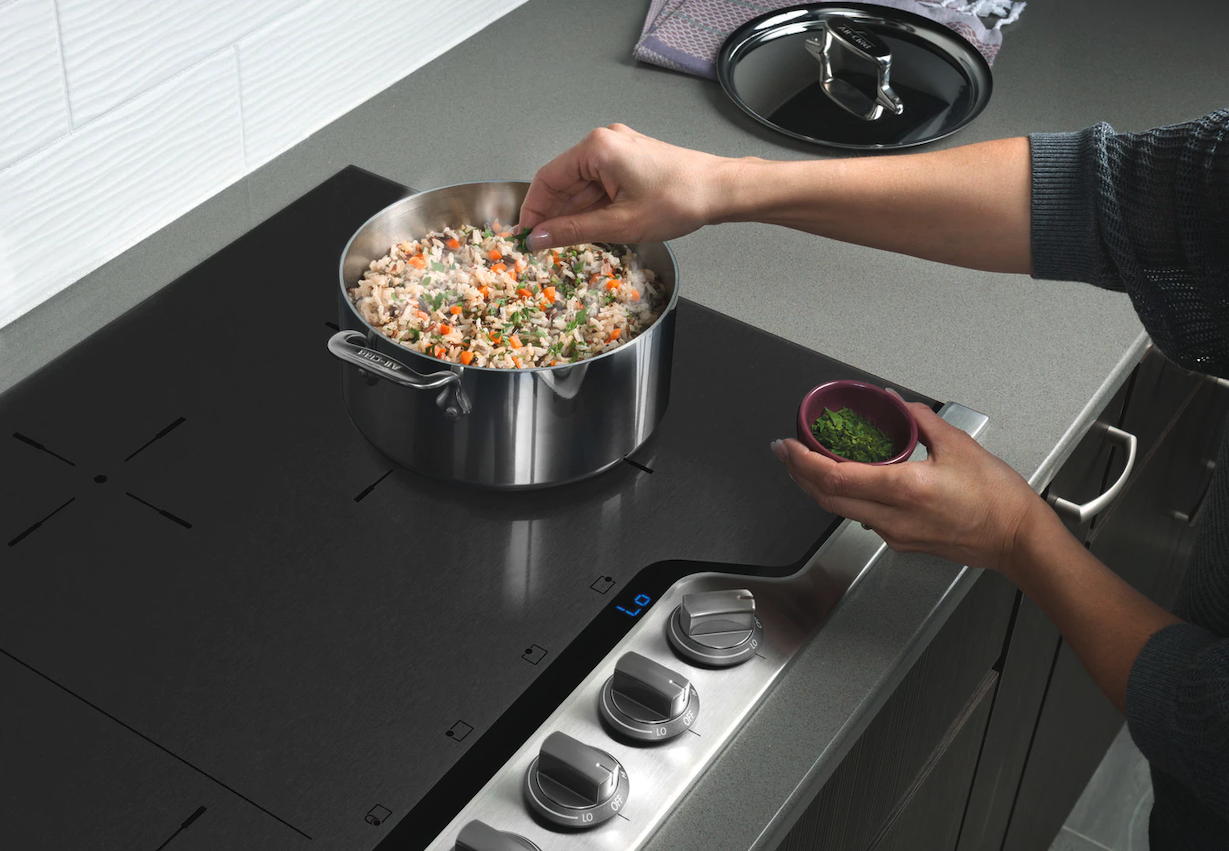
Induction stoves cook food using electromagnetism. Underneath the flat cooktop is a metal coil. When the stove is turned on, the coil creates a magnetic field. It reacts with the pot on top, creating a current. This current creates heat, the heat that warms your food. It heats only the pot, not any space surrounding the burner. This makes them energy efficient and fast to warm up. Induction stoves require specific pots and pans that connect with the cooktop. Some induction stovetops even come with WiFi capabilities.
These stoves are flat, making them very easy to clean. The smooth top is also very modern and sleek. Plus, the stove can be used as extra counter space when you are not using it. Be sure to remove all items and food before turning on any burners.
Induction stoves are unique in that they only heat up in one area. One burner can be on, and the rest of the stovetop will remain cool. This can be great if you have small children who like to help cook. But be aware that this can also be a hazard because the stove may look cool but could actually be hot. It’s important to always look to see if the “hot burner” light is on. Induction stoves are quick to respond to temperature changes.
They can be scratched by pots or cleaners, and they can be broken by heavy objects. If broken, the whole top can shatter. Fortunately, you can replace induction cooktops on ranges. Induction cooktops start at around $900.00 and go up to around $3,500.00+.
Electric
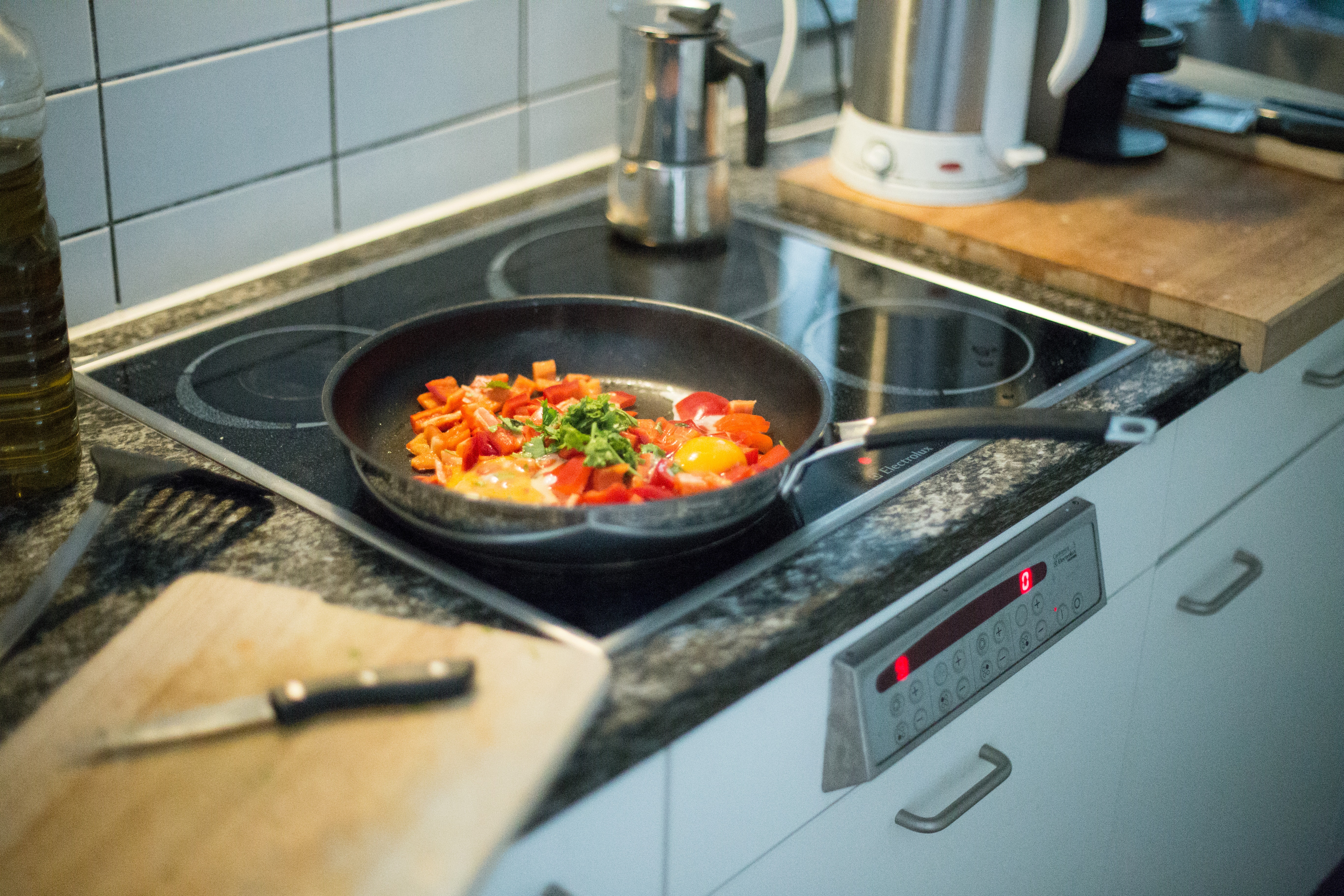
Electric stoves use electric coils for cooking food. They are best for cooking and heating simple meals, as they cannot chare, toast, or flambé. Unlike induction, you can use any type of cookware. These cooktops tend to be the cheapest on the market. They start at around $500.00 and go up to around $1,500.00+. However, a gas stove is 10-30 percent cheaper to operate than an electric stove. They also require a specific outlet, so if your home is not equipped with one, you may have to install one yourself, which is a job for a professional.
Many electric stoves are flat and smooth, making cleaning a breeze. If you have an electric stove with electric coils, that is another story. Coils can be very difficult to clean. Learn how to properly clean your stovetops and ovens here.
Electric stoves can be dangerous because many times, there can sometimes be no warning as to whether or not the burners are hot or not. It’s important to always see if the “hot burner” light is on.
Gas
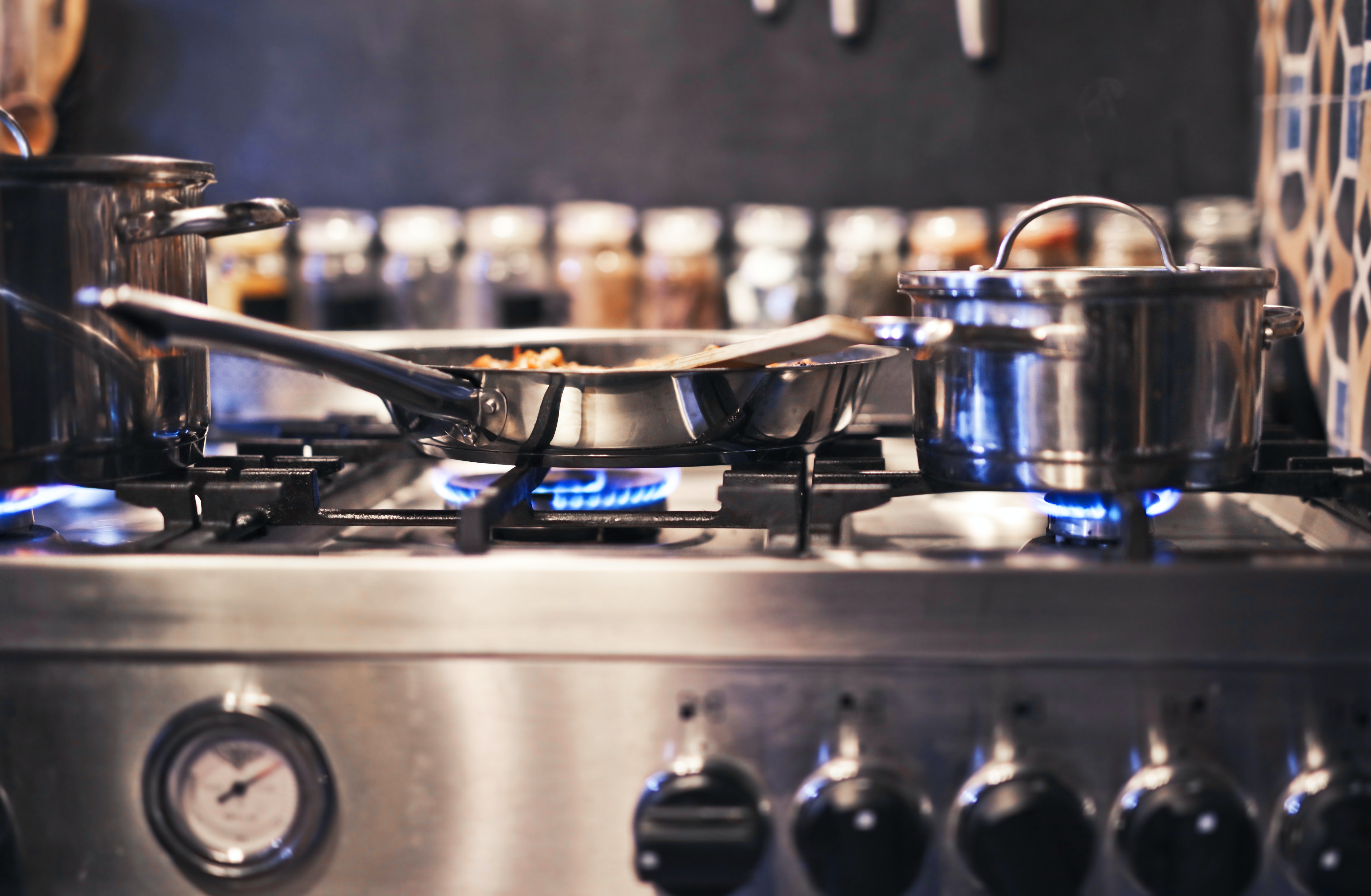
Gas stoves use a real flame for cooking food. Gas stoves respond very quickly to temperature changes. They also have more control over some cooking techniques such as charring, toasting, and flambéing. These stoves are great for those who cook intricate and advanced meals. Gas stoves have easy-to-remove grates and burners, making for fairly easy cleaning.
Gas stoves do require a gas line. Many homes do not have gas lines and aren’t compatible with gas stoves. If your home doesn’t have a gas line, they can be installed in most situations. Gas lines are easier to install than an electrical outlet, making them easier to install than electric and induction stoves. Unfortunately, Gas stoves pose the risk of a gas leak. If the stove is installed correctly, it is not likely that gas will leak, but it is still possible. Homes that use gas ranges or any gas appliances should have carbon monoxide detectors in the homes.
Gas ranges start at around $700.00 and go up to $2,000.00+.
Which is Quickest?
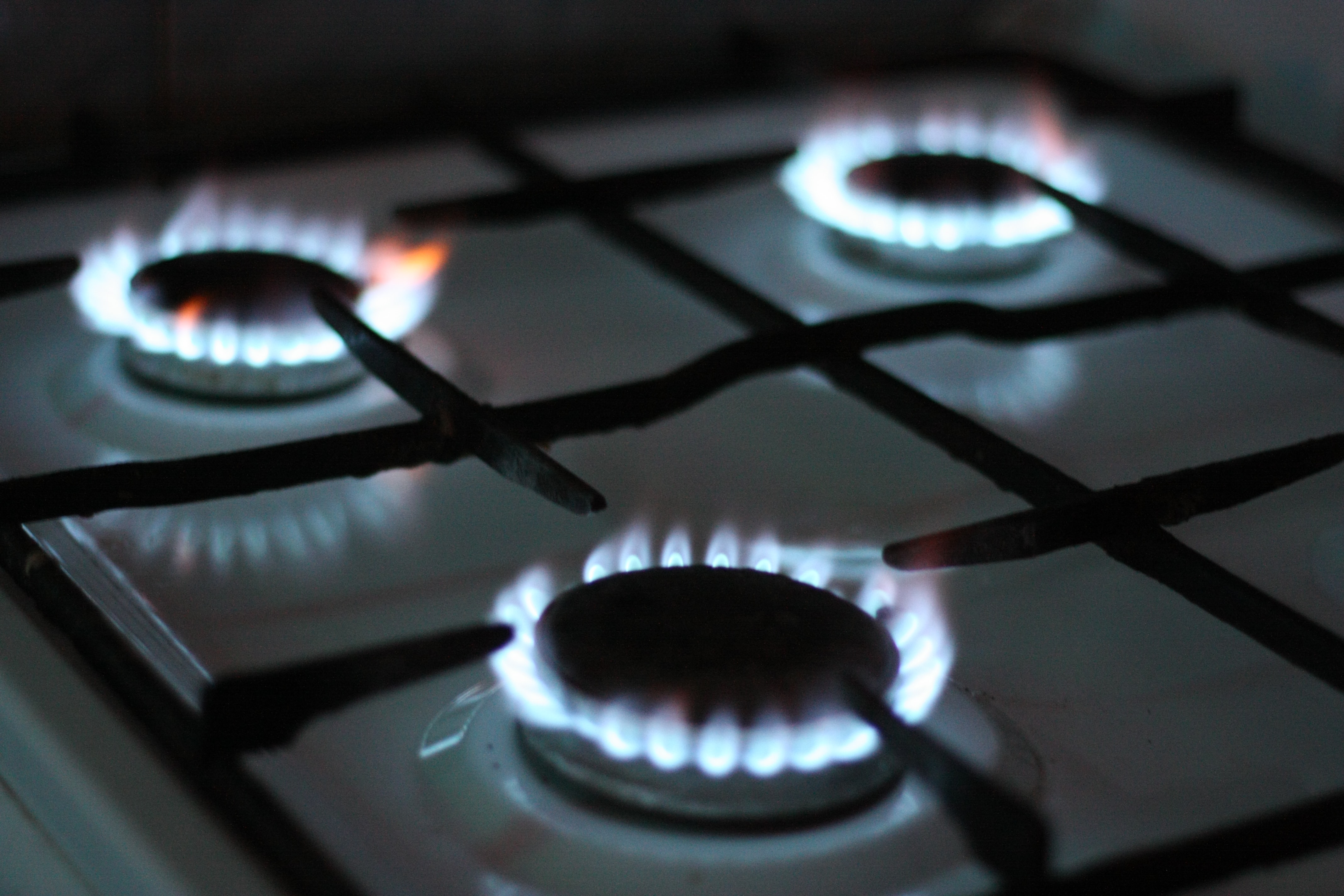
Induction stoves are the quickest to heat up, gas is next, and electric stoves are the slowest. Everyone has different needs for cooking and their home. Which stove will you choose?
